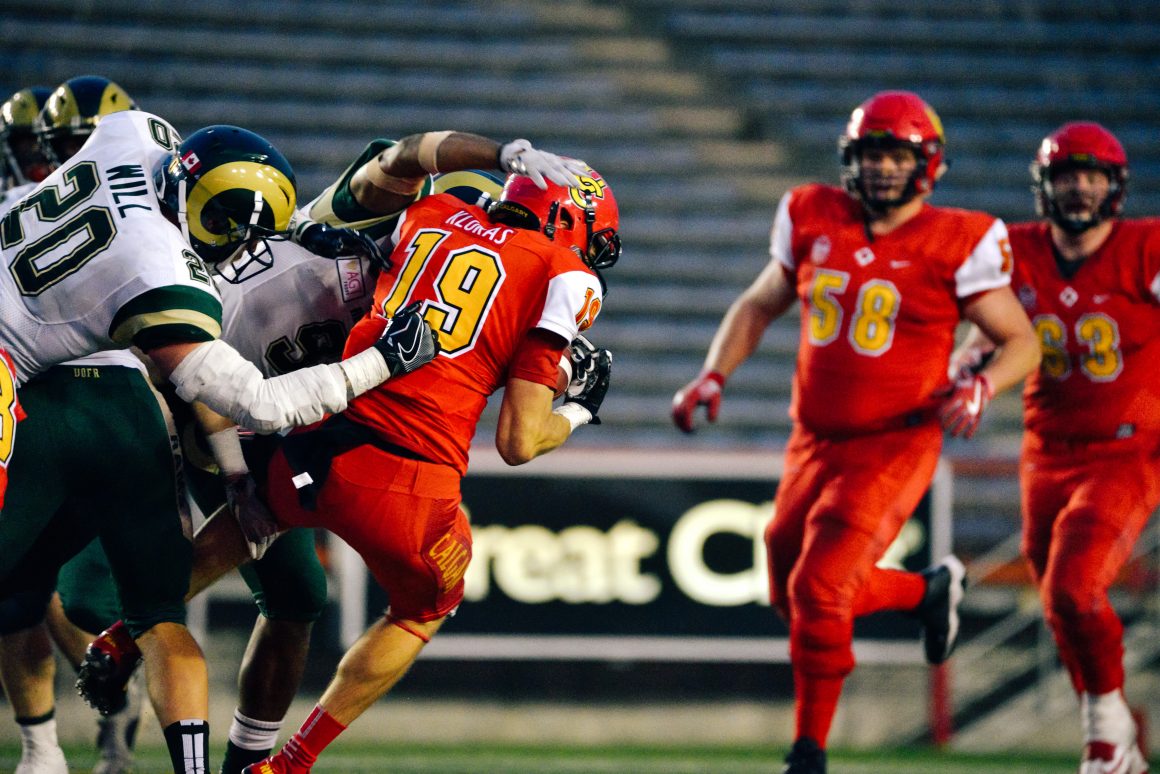
Advanced player-tracking technology changes how we experience sports
By Kent Wong, October 12 2017 —
Since 2014, Zebra Technologies has served as the National Football League’s “official on-field player-tracking provider.” Their goal is to capture individual player movements and statistics in real-time. They then convert their recordings into hard data for officials and analysts to use.
In 2016, Zebra fitted radio-frequency identification chips in player equipment to monitor speed, ground coverage and exertion. Coaches and managers use this data to structure training procedures and player management. This season, Zebra wants to install lightweight chips into footballs to measure travel speed, number of rotations and on-field location.
In-depth empirical analysis in sports isn’t new. In the ‘80s, a qualitative approach called sabermetrics emerged for analyzing baseball games and player performance. The Oakland Athletics, a low-budget Major League Baseball team, popularized sabermetrics after its implementation brought them to the World Series in 2002 and 2003.
The A’s may not have won the World Series, but the Boston Red Sox did in 2004 and ended their 86-year championship drought after employing the same methodology. This stirred a revolution in game analysis across all sports. Most major league teams currently rely on scouting data and statistics to develop their teams. Advanced, real-time tracking technology produced by companies like Zebra make this information — also known as big data — even more accessible and detailed.
However, some worry that excessive focus on hard data and numbers distracts from the heart of sporting events. Much of our commitment to a sports team is based on a personal affinity for a game and the stories of the athletes belonging to it.
The production and application of such technology is still new and we can only speculate about how it will continue to affect the sports experience. University of Calgary computer science professor Tony Tang thinks it will captivate fans and bring them closer to their favourite teams and players.
“My sense is that there is a growing appetite for so-called ‘advanced statistics,’ ” Tang said. “We see this with TSN, who hired a full-time statistician, Scott Cullen, to help write stories that are focused around advanced stats in hockey. His work is interesting and a great example of how advanced statistics can be weaved into storytelling or deeper analysis of hockey players and games. We also see lots of amateur bloggers who are increasingly writing about these advanced statistics.”
This information could be really fun and useful for fans who participate in sports pools and fantasy teams. But Tang says it might not mean much to more casual fans.
“I think one question that needs to be asked is what the role those advanced statistics have in storytelling,” he said. “I don’t usually read the recap of a game that I watched live or on TV. However, if I didn’t manage to catch a game, I like reading the story because it’s a fun way to understand what happened. In games I watched live, I have a sense of the story. I think the challenge is it’s not clear what role advanced stats have in this type of storytelling or narrative. The reality is that they are usually a shorthand for describing a player or a team’s capacity or skill set.”
Fan turnout at Dinos games has fluctuated over the years. University students are busy and can’t catch every game. But being provided with such detailed player and game information could forge an interest in Dinos sports and sense of intimacy with student-athletes without physically attending or even watching a game.
Similar technology could help prevent player injuries as well by recording impact and force levels on certain parts of the body. This information warns players if they’re prone to injury. Real-time concussion sensors are already installed in football helmets at many high schools across North America.
The U of C is even offering an introductory data science course — SCIE 201: Thinking with Data — to all students. This is evidently a growing field and one that’s only gaining more momentum. Next time you watch a game, think about the big picture — why did the winning team win? Was it just that one play? Or was it an orchestra of details we can’t quite yet grasp?
